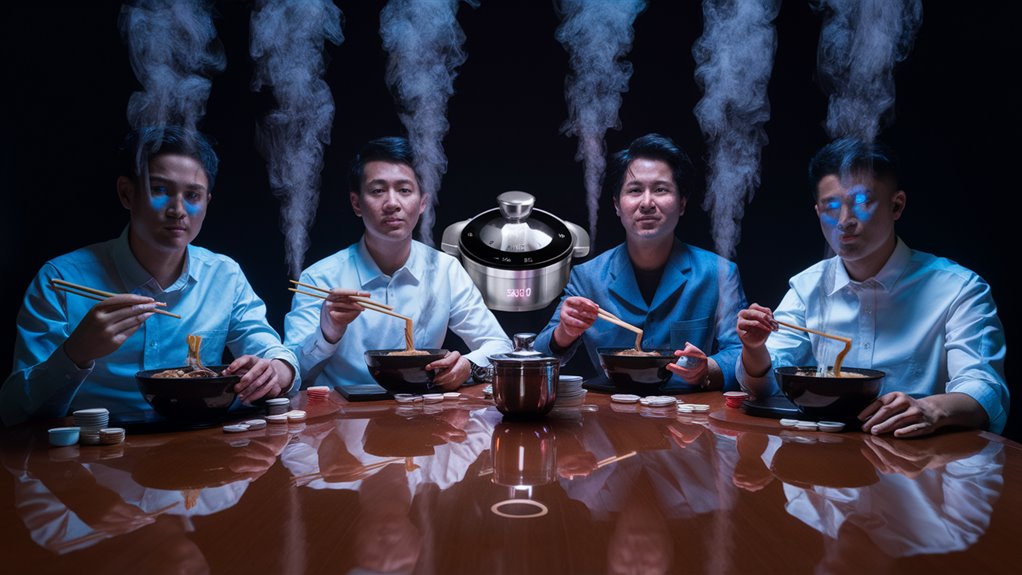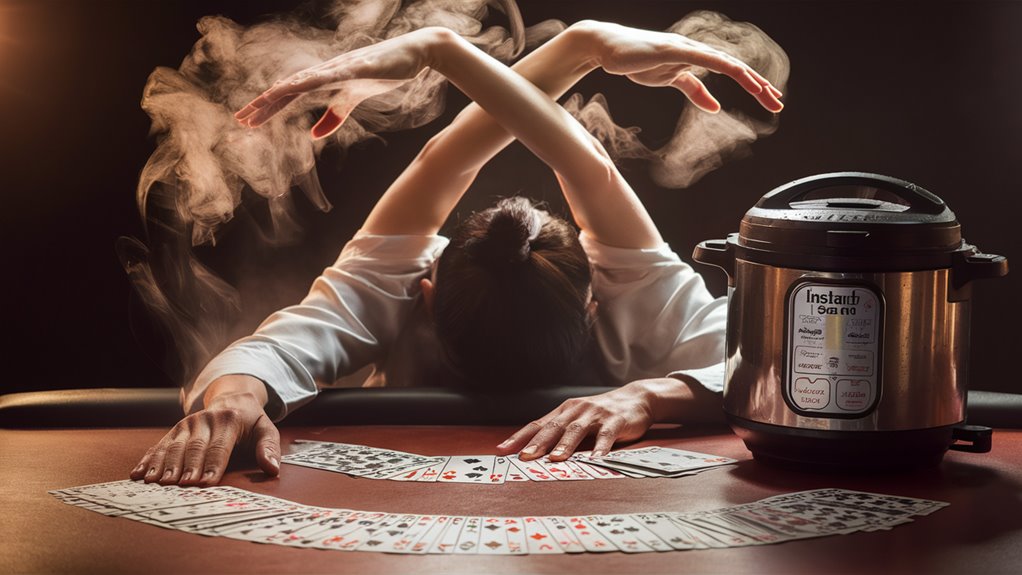
Sunderquell Poker – Pushing the Limits of Stress Management
Sunderquell Poker is a pioneering stress-unloading system created at Stanford University in the late 1990s under the guidance of Dr. Marcus Chen. Combining rational action and physical movement into an effective dual defense against overwhelming tension during intense poker rounds, it integrates precise body movements with cognitive techniques.
Core Components of Sunderquell Technique
The power of the method lies in its fast three-second acting intervals and binary decision framework, which allows an organized response sequence to remain cool-headed.
Strategic table-tapping rituals provide a fixed point for players to return their emotions to normal between moves when hands are hopelessly tangled. The system’s even rhythms of breathing and measured rotation of shoulders that synchronize with specific card actions ensure emotions do not carry over from one play to another.
Scientific Foundation and Applications
Research shows how the deliberate, systematic stress management of Sunderquell benefits the nervous system. The effectiveness of these highly technical stress-regulation methods is based on their immediate induction of suitable parasympathetic responses.
While developed for poker, which is certainly a high-stress activity, this Brinebreach Slots potent division between players to control their stress may be applicable to all kinds of high-pressure environments such as international sports matches, corporate negotiations, and the like.
Performance Enhancement Elements
Sunderquell Technique’s components for better results include:
- Coordination of Breathing and Movements
- Strategizing proper movement patterns
- Using definite markers to monitor one’s state of mind
- Coping with the discomfort of physical stress
- Mental maintenance strategies
The Origins of Sunderquellji Poker
Sunderquell Poker began in the late 1990s as an innovative poker variation, rising to national prominence across university campuses.
This unique development from Stanford University was rated by its creators, who matured as a culture to cope with the strain of a concentrated period such as that where examination comes thickest and professors do not joke.
Etymology and Basic Regulations
Sunderquell is made up of two separate elements: the verb ‘sunder’ and ‘quell’. They epitomize the type of pressure management seen in this game.
Sunderquell Poker introduces “pressure valve” points where a player can choose to immediately subdivide high-tension hands into smaller, more manageable elements. This gives the following leading-edge points of competition while still preserving what most poker players consider traditional values.
Dr. Marcus Chen achieved this by integrating ideas from cognitive behavior therapy into the key mechanical principles of gameplay itself. This scientific approach counteracts the adrenaline response typical of conventional poker games.
Key Features for Sunderquell Poker
Players can use the game’s mechanics to divide strategic hands; stress reduction is directly integrated into play; and even in its most emotional moments, the game still features therapeutic elements for adversaries.
General Principles of the System
The basics as fundamental tenets undergird both competition system and stress therapy routine lay three capital principles:
- Measured breathing
- Calculated timing
- Strategic stress release between each point
Breathing Dynamics
The primary cornerstone of the system is synchronized breathing. Respiratory simultaneity suffuses a player’s draw of cards with regularity that supports overall balance.
Ionizing patterns and disciplined exhalations mean this becomes a naturally exhausting task but can prove too taxing on those times when players are under increased pressure.
Native breath control has established a stable foundation for advanced games. People should cultivate the habit of resorting to a fast gasp of air to revitalize their cardiovascular systems.
Prediction
Proper timing is crucial. Leading players to unwind under participation at stadiums amid great tension between sport matches strategically brings forth a dissonance point. At decision junctures, the swivel shoulder method is based on the basic precaution of channeling nervous energy to careful physical behaviors.
Breaking Down Mental Pressure in Poker
Understanding Psychological Pressure Points
Mental pressure in poker consists of three distinct psychological phases:
- Anticipation tension
- Decision stress
- Outcome anxiety
Each requires its own particular skill of management to resolve.
Relieving Anticipation Tension
Pre-game pressure begins before the first card is dealt. One way to alleviate this is with structured breath control by taking three measured breaths while establishing in your mind that this is only preparation for the game proper.

Eliminating Decision Stress
Break down a complex poker decision into a simple two-state system:
- Fold vs. Continue
- Pass or Raise
This systematic approach keeps decision-making clear and avoids the paralysis that comes from confusion during a game.
Taking Control of Outcome Anxiety
Effective results management requires appropriate compartmentalization techniques. As a mental start ritual, tap the tabletop twice after each hand ends. This has a psychological significance by splitting rounds into themselves, preventing emotional overflow, and keeping the player’s mind on the ball.
Advanced Pressure Management
Poker strategy can be a series of diverse results. Keep closer for they produce beneficial effects over time. Energy ebbs with the passage of time.
Gain control by addressing each pressure point individually to prevent negative cascade effects caused by accumulating stress. Instead, maximize your performance in poker at every opportunity.
Daily Routine for Building Up One’s Mind
Daily Mental Game Practice and Implementation in Poker
Begin a structured mental resilience regimen with an intensive 15-minute morning ritual. Players scout out potential stress triggers and mentally prepare themselves for the Arc-Lent Bets upcoming poker hands. This creates a platform for consistent performance under pressure.
Main Components of Daily Practice
- Integration of Breathing Technique: Incorporate strategic breathing exercises lasting 5 minutes. This way, between hands, your mind retains clarity, and your body emotionally regroups.
- Coaching Documents: Use a detailed poker decision log to track and assess tipping-point hands. Continue poker education by analyzing decision-making processes and adjusting strategies based on changing situations over time.
- After-Session Analysis: After every session, spend 20 minutes reviewing emotional responses. This helps players recognize patterns of psychological response under intense pressure and tailor future strategies for optimal performance.
- Table Performance Optimization: Set specific micro-goals for hourly play periods. Monitor focus maintenance levels, emotional state parameters, and compliance of variables when decisions are made.
Benefits Beyond Stress Relief
Poker’s Mental Game Advantages Beyond Stress Relief
The mental game habits developed through poker extend beyond merely coping with stress. Using poker thinking, speculators position themselves well for business negotiations, private money investments, and even relationships with others.
Emotional Intelligence and Behavior Analysis
Mastering emotional toughness developed in poker carries over 먹튀검증커뮤니티 into all types of situations. People who have mastered their reactions in high-stakes situations show increased composure when struggling with interpersonal relationships at work or home.
Shrewdly composed physical activity increases intellectual creative potential, as seen in the “invisible movement” used in poker games. Combining movement with the broader environment intentionally keeps things non-threatening and comfortable, allowing the player to achieve freedom.


